Publications
-
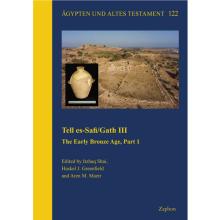
Tell es-Safi/Gath III: Studies on the Early Bronze Age, Part 1
Summaryספר זה הוא הכרך השלישי של הדו"ח הסופי של פרוייקט החפירות בתל צפית/גת, בראשות פרופ' אהרן מאיר. הכרך מתרכז בממצאים מתקופת הברונזה הקדומה שנתגלו במסגרת החפירות באתר, וכולל סקירה על הסטרטיגרפיה והארכיטקטורה, קרמיקה, כלי אבן וכלי נחושת, ופרקים על נושאי מחקר שונים, כולל קבורת חמור טקסית, ארכיאומטלורגיה, פטרוגרפיה, ועוד
-
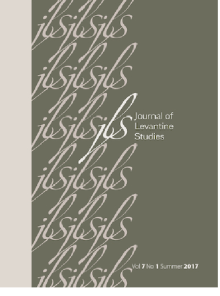
Dust clouds, climate change and coins: consiliences of palaeoclimate and economy in the Late Antique southern Levant
SummaryThe climate factor has become a focus of much historical and archaeological investigation, encouraged recently by improvements in palaeoclimatic techniques and interest in global climate change. This article examines correlations between climate and history in the Byzantine southern Levant (c. 4th–7th centuries AD). A proposed 5th century economic downturn attested to by numismatic trends is shown to coincide with palaeoclimatic evidence for drought. We suggest a climatic ultimate cause for the apparent economic decline. In addition, the relationship between the Dust Veil Index (DVI) and annual precipitation in Jerusalem suggests the likelihood of increased precipitation following the 536 AD volcanic dust veil. This prediction is borne out by high-resolution precipitation reconstructions from Soreq cave speleothems and by sedimentation records of extreme flash flooding. These finds complement palaeoclimatic reconstructions from Europe showing a drop in precipitation after 536 AD. Drought in Europe and flooding in the Middle East are both expected outcomes of global cooling during volcanic winters, such as those described in historical accounts of the 530s AD.
-
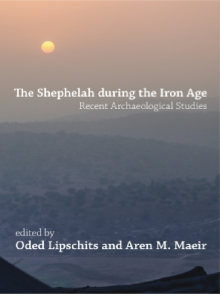
Philistine Gath after 20 Years: Regional perspectives on the Iron Age at Tell eṣ-Ṣafi/Gath
SummaryThe ongoing archaeological project at Tell eṣ-Ṣafi/Gath, now at the beginning of its third decade in the field, is in the envious position of being one of the longestrunning, ongoing projects currently working in the region of the Shephelah (fig. 1). As such, we have benefited in our research from the various projects that have worked in this and adjacent regions before us and alongside us, and most importantly, from the “boom” of projects that have commenced in the Shephelah in the last few years. This situation enables current research, at Tell eṣ-Ṣafi/Gath specifically and the region in general, to move beyond “the basics”—such as the rudimentary study of the regional material culture—and to deal with various, and in many cases, broader issues. In the following pages, I do not intend to recapitulate the many finds and results from the Iron Age that have been found at Tell eṣ-Ṣafi/Gath since the beginning of the project (see, e.g., Maeir 2012a; 2012c; 2013a; Maeir and Uziel in press) but rather to utilize this platform to discuss a choice set of specific finds and issues that relate to the site itself, as well as to consider wider issues that are of relevance to the understanding of central issues in Iron Age archaeology in the Shephelah and beyond.
-
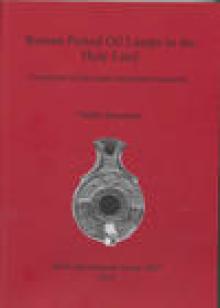
Roman Period Oil Lamps in the Holy Land Collection of the Israel Antiquities Authority
SummaryRoman Period Oil Lamps in the Holy Land
Collection of the Israel Antiquities Authority
בהוצאת:Archaeopress
Publishers of British Archaeological Report -
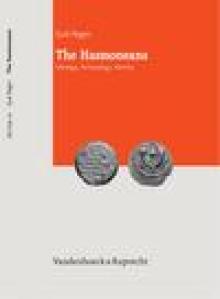
The Hasmoneans: Ideology. Archaeology, Identity
Summaryבהוצאת: Vandenhoeck & Ruprecht
Journal of Ancient Judaism Supplements 2013
A defining work on the cultural and social character of the priestly family. The first two chapters discuss the
religious practices of the Hasmoneans. Chapter 1 explores why the Maccabees regarded Hanukkah as a festival of renewal, specifically of those traditions related to the Temple cult.
Chapter 2 examines the manner in which the Hasmoneans used the protection and maintenance of the Jewish Temple to legitimize their rule—and how they worked to place the Temple at the center of the Jewish religion. Chapters 3–5 deal with different perspectives in the Hellenistic world on the role of government and royal ideologies.
Specifically, chapter 3 explores both the Hellenistic and Jewish contexts for Hasmonean government and kingship. Regev shows how the Hasmonean dynasty built up its religious (in contrast to political) authority,
suggesting that the Hasmonean state was not a conventionally Hellenistic one, but rather a ‘national’ monarchy, closer to Macedonian in type.
Chapter 4 attempts to decipher the meaning of the symbols and epigraphs on Hasmonean coins, and examines how both Hellenistic symbols and Jewish concepts were employed to reinforce the dynasty’s authority and introduce Jewish ‘national’ ideas into the populace. Chapter 5 then undertakes a comparative social-archaeological
analysis of the Hasmonean palaces in Jericho in an effort to gain insight into their royal ideology. The author compares the Hasmonean palaces to other Hellenistic palaces – especially the Herodian palaces. Finally, the concluding chapter integrates the previous findings into a new understanding of and appreciation for the Hasmoneans’ creation of an
innovative Jewish corporal identity, one whose echoes we can still hear
today.
-
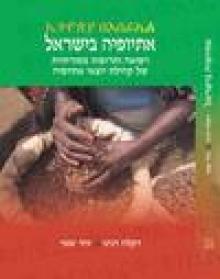
Ethiopia in Israel- Ethnic Medicine and Traditional Medications of the Ethiopian Community
Summaryשנת הוצאה: תשע"ג / 2013- מכון בן צבי
רבים מקהילת יוצאי אתיופיה בישראל עדיין אוחזים במסורת רפואית ייחודית ועתיקה, אם כי תהליכי המודרניזציה מביאים להשתכחותה.
ספר זה מתאר את מאפייני הרפואה האתיופית, סוגי מרפאים שונים ושיטות רפואיות מסורתיות.
עיקרו של הספר מתמקד בתיעוד התרופות המסורתיות שעדיין משתמשים בהן יוצאי אתיופיה בישראל.
זהו פרי מחקר מקיף ראשון בתחומו בארץ ומבוסס על מאות ראיונות עם מידענים בני הקהילה. כמו כן, הוא כולל סקר של עשרות חנויות תבלינים ותרופות הנמצאות ברחבי הארץ, המהוות עדות חיה ופעילה להמשך קיומה של הרפואה האתיופית.
בספר מתוארים כמאה שמות של חומרי מרפא שמקורם מן הצומח, החי והמחצב, תוך ציון שימושם בעבר ובהווה. חלק נוסף מוקדש לתיאור מאכלים ומשקאות השכיחים בקהילה האתיופית.
הספר כתוב בלשון השווה לכל נפש, מלווה בתמונות צבעוניות, בכתיב ובתעתיק הלשונות אמהרית ותגריניה.
-
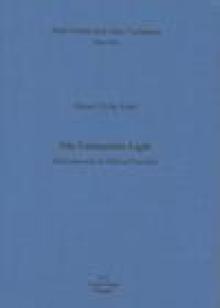
"The Unbeatable Light"
Summary -

Zionism and Free Enterprise
SummaryIrit Amit-Cohen explores the riddle behind disappearing citrus orchards and plantations from Israel’s coastal scenery. The book reveals the biographies of entrepreneurs who came to Palestine in the 1920s and 1930s. Exposing the uniqueness of the plantation companies, describing the figures involved in them and analyzing their contribution to forming Palestine’s settlement landscape in the British Mandate period, this book relates the intimate narrative of settlements which were built as temporary structures, but still leave lasting imprints on the landscape..
-
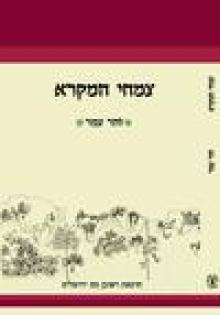
Flora of the Bible
SummaryFlora of the Bible, Rubin Mass Ltd., Jerusalem 2012
A New Investigation Aimed at Identifying All of the Plants of the Bible in Light of jewish Sources and Scientific Research.
זהו המחקר המעודכן ביותר על זיהויים של הצמחים הנזכרים בתנ"ך לאור מסורות הזיהוי השונות והמחקר המדעי. הוא מאפשר לקבוע מהם הצמחים המזוהים בוודאות ובין אלה המסופקים. המחקר תורם להכרת צמחי הבר וחלקם בנוף הטבעי של ימי המקרא, השימוש של האדם בצמחי תרבות שונים: למאכל, בושם ותעשיה.
-
Sectarianism in Qumran: A Cross-Cultural Perspective
SummaryWalter de Gruyter, Berlin 2007
הספר בוחן את המאפיינים הכיתתיים בקומראן: כפרה, פרישה מן הכלל, משיחיות, יחס למקדש והלכה בכלל, ארגון חברתי, טקסים, מגדר, יחס לכסף ומיסטיקה. נעשה שימוש בתיאוריות סוציולוגיות ואנתרופולוגיות ונערכת השוואה מקיפה עם כתות מודרניות כגון האמיש, הקוויקרים, הפוריטנים והשייקרס.



